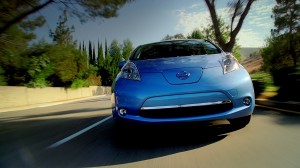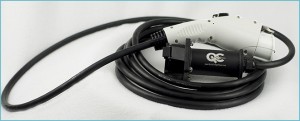
I’ll be a guest on KQED Forum at 10am PT today discussing how to improve electric vehicle charging infrastructure in California.
Electrical vehicle purchases in the state dropped significantly in the second half of last year, for the first time in a decade. It’s likely this is just a blip, but some potential EV buyers say that they’re holding off because of concerns over public charger access and reliability.
The situation may be improving though: California approved a $1.9 billion dollar investment in EV charging infrastructure last month, which will bring 40,000 new chargers online – including in rural areas.
On the show, I’ll talk about what California needs to do to meaningfully expand its EV charging infrastructure ahead of its 2035 ban on the sale of new gas-powered cars. Joining me on the panel will be:
- Russ Mitchell, Automotive Editor, Los Angeles Times, who covers the automotive industry.
- Terry Travis, managing partner, EVNoire, a Mobility Consulting Group that works to integrate and amplify diversity, equity, and inclusion in the electric transportation sector.
Tune in on KQED 88.5 FM in the San Francisco Bay Area or stream live at 10am PT!
California’s ambitious goal to end the sale of internal combustion engine passenger vehicles by 2035 will require addressing the challenges faced by lower- and moderate-income drivers in accessing battery-powered electric vehicles (EVs). Chief among these concerns is their need to have a convenient and affordable place to charge the vehicles.
Currently these residents too often experience limited access to EV charging stations, especially in lower-income communities characterized by lower home ownership rates and higher rates of tenancy in apartment buildings. Residents in these areas are more likely to lack dedicated parking spaces equipped with electric outlets, hindering their ability to charge EVs conveniently. Even those with garages or parking spaces may face financial constraints when it comes to investing in private charging and electrical upgrades. Compounding these challenges is the often-inadequate grid infrastructure in lower-income areas.
In response to these obstacles, UC Berkeley School of Law’s Center for Law, Energy & the Environment (CLEE) partnered with the City of Watsonville, a diverse city of 50,000 in Santa Cruz County’s agricultural heartland. Due to its location, demographics, and ambitious policy goals, Watsonville represents a potential model and case study for other cities around the state grappling with how to boost zero-emission vehicle charging infrastructure.
Today CLEE is pleased to release a new report, which draws on stakeholder interviews and a convening held in Watsonville to offer a set of policy recommendations for both state and local leaders. These recommendations aim to accelerate investment in EV charging infrastructure not only in Watsonville but other cities facing similar challenges in meeting state targets while addressing lower-income residents’ needs.
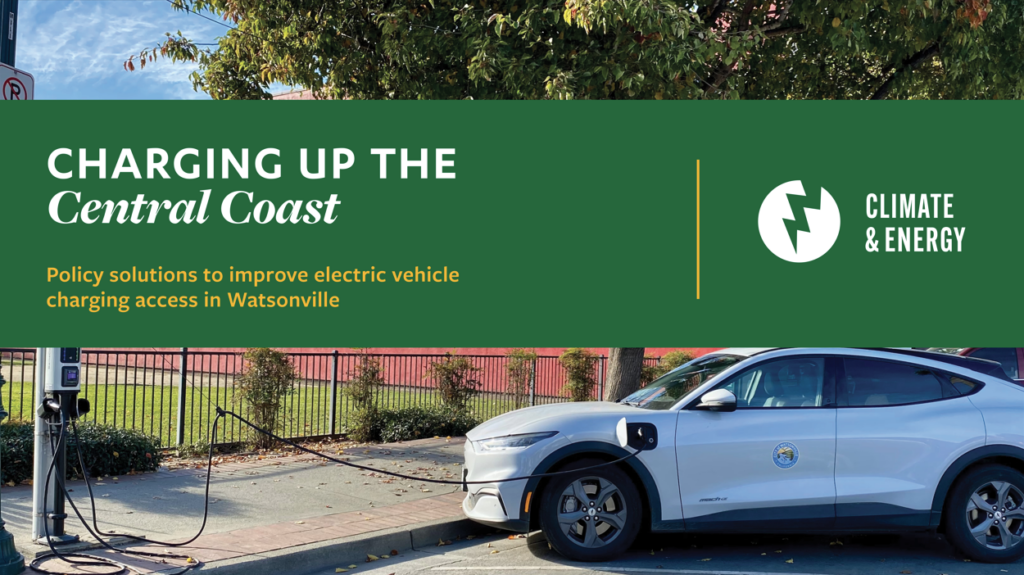
- Comprehensive Mapping Assessment: Watsonville’s City Planning Department and Public Works & Utilities Department could initiate a comprehensive mapping assessment to determine optimal and equitable charger locations based on local needs and transportation patterns.
- Zoning and Permitting Policies: Watsonville’s City Planning Department could revise zoning and permitting policies to require EV charger installation or EV-ready electrical infrastructure at certain priority locations.
- Electricity Rate Optimization: The CPUC and utility companies could implement electricity rates that reduce the cost of charging during off-peak hours and improve transparency for consumers about these rates.
- Community Awareness Campaigns: The state transportation agencies could expand support for community based organizations in Watsonville that conduct targeted, multi-lingual public awareness campaigns about the potential cost savings and benefits from switching to EVs.
By prioritizing charging access, state and local leaders can ensure that California’s path toward equitable EV deployment is not only aspirational but also achievable, particularly for the lowest-income drivers in the state. The lessons learned from Watsonville can serve as an example for other cities grappling with similar challenges, ultimately contributing to a more inclusive and sustainable transportation landscape.
Read our full report here- Charging up the Central Coast: Policy solutions to improve electric vehicle charging access in Watsonville

Like the proverbial Betamax vs. VHS technology competition of the 1980s, EV fast charging has been caught up in a wasteful turf war involving three different formats, basically boiling down to Japan versus Europe/North America vs. Tesla. But now we suddenly have a winner, as first Ford and then General Motors and startup Rivian have all pledged in the past few weeks to adopt the Tesla charging standard in their vehicles starting next year, with adapters available for consumers this year.
It couldn’t happen soon enough. The differing charging formats means EV drivers are limited where they can get fast charging or have to carry adapters, while non-Tesla charging stations had to have multiple plugs available for different formats.
The other problem is that non-Tesla chargers are basically awful. They’re unreliable, clunky and often with low power. While legacy automakers dithered and refused to invest in a network of chargers, Tesla instead built a user-friendly, ubiquitous network. The company is now poised to reap the economic benefits, from its position as a dominant market leader in vehicle sales.
One of the big questions now is what happens to all the soon-to-be-obsolete chargers out there? Companies like EVgo and Electrify America have built thousands of fast-charger stations with formats that are now zombie technology. Worse, the public has invested significantly in these stations, with EVgo a creation of a $100 million legal settlement from the California energy crisis circa 2000, while Electrify America was funded with dollars from the Volkswagen “dieselgate” emissions cheating settlement, to the tune of almost $1 billion in California alone.
All will not be lost, as the stations can be retrofitted in some cases. The wiring is sometimes the hard part, so charger replacement by itself may not be too expensive. But in some cases, retrofits may be uneconomical. And ultimately, these companies are likely to go out of business, unless they can get access to Tesla’s intellectual property to build their own versions of a Tesla SuperCharger.
If not, Tesla will have a monopoly on charging stations, which will create its own long-term problems. But for now, the charging format wars have ended, in favor of a far superior product.
That’s something that both EV advocates and drivers can finally celebrate.
City dwellers in apartment buildings who lack dedicated parking spaces are sort of out of luck when it comes to owning an electric vehicle. As a possible remedy, I’ve mused before about the possibilities of installing public charging stations on city streetlights.
Now it looks like the city of Lancaster in California’s desert is moving forward with a pilot program, as ChargedEVs reports:
The City of Lancaster, California has launched a demonstration project that will integrate chargers into five streetlights in the trendy downtown district. The charging units are made by ebee Smart Technologies, a specialist in controller technology designed to make installing public charging cheaper and more flexible. The company has installed some 10,000 of its controllers in chargers in Europe.
A grant from the Antelope Valley Air Quality Management District will cover 80% of the project cost, including installation, maintenance, and five years of data collection. The remaining 20% will be covered by ebee and its partners, EasyCharge and eluminocity, which created the charger housings.
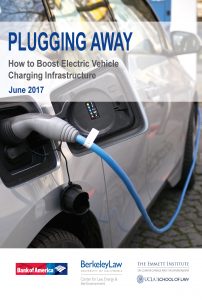 If it can work in Lancaster, maybe it can work in densely populated downtowns anywhere around the world. Because otherwise these residents are victims of inadequate charging infrastructure, as Berkeley and UCLA law schools covered in our new report “Plugging Away: How to Boost Electric Vehicle Charging Infrastructure.”
If it can work in Lancaster, maybe it can work in densely populated downtowns anywhere around the world. Because otherwise these residents are victims of inadequate charging infrastructure, as Berkeley and UCLA law schools covered in our new report “Plugging Away: How to Boost Electric Vehicle Charging Infrastructure.”
And this infrastructure deployment can’t happen soon enough, with automakers like Volvo now announcing that they’re abandoning internal combustion engines by 2019.
The electric drive revolution is here, but it will falter without more investment in options like streetlight charging, for all those who live in buildings without dedicated parking.
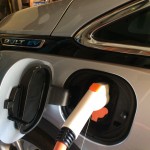 Electric vehicles (EVs) represent one of the most promising clean technologies, in terms of their potential benefits for the electricity grid, local air pollution, and reducing the greenhouse gas emissions that cause climate change. Not to mention they’re fun to drive.
Electric vehicles (EVs) represent one of the most promising clean technologies, in terms of their potential benefits for the electricity grid, local air pollution, and reducing the greenhouse gas emissions that cause climate change. Not to mention they’re fun to drive.
The good news is that as EV prices have dropped by nearly half the last few years, the number of Californians driving them has gone way up, with almost 300,000 EVs now on the state’s roads (up from about 10,000 just five years ago). The batteries in these vehicles can be used to soak up surplus renewable energy, and the use of electricity instead of petroleum as a fuel means significant reductions in air pollution and greenhouse gas emissions.
But all this progress is threatened by the lack of reliable and accessible charging stations, particularly for the 40 percent of Californians who live in apartments, townhouses, and condominiums without dedicated on-site parking spaces with charging capability (including even just a simple wall outlet).
Researchers estimate that California may need up to 220,000 publicly accessible charging ports by 2020 to meet projected demand, way beyond the roughly 12,000 available today. Hundreds of thousands of additional charging stations may be necessary at those multi-unit dwellings.
Private investment alone won’t be enough to make it happen: the business model for charging stations is currently not strong enough to attract sufficient private capital. Simply put, many charging stations are too expensive to build and operate right now, without dependable near-term revenue to cover costs and produce a profit.
“Plugging Away” Report Releasing Today
 To address the challenge, UC Berkeley and UCLA Law convened experts from the EV charging sector in 2016, including automakers, utilities, and charging companies, as well as government officials, academics, and nonprofit advocates.
To address the challenge, UC Berkeley and UCLA Law convened experts from the EV charging sector in 2016, including automakers, utilities, and charging companies, as well as government officials, academics, and nonprofit advocates.
Based on those discussions, the law schools are today releasing the new report “Plugging Away: How to Boost Electric Vehicle Charging Infrastructure.” It is the eighteenth report from our Climate Change and Business Initiative, generously supported by Bank of America since 2009.
Among a number of detailed solutions, the report recommends:
- More robust and strategic electric utility investments in charging infrastructure, at least for any new wiring to the charging station, in key locations such as workplaces, multi-unit dwellings, and fast-charge “plazas” to stimulate maximum EV convenience and adoption;
- Revised commercial electricity rates to encourage charging at the right places and times to best meet grid needs, including options to reduce high demand charges related to peak usage at remote fast-charging sites; and
- Targeted rebates and grants for office and multi-unit dwelling building owners to install charging stations, as well as expedited permitting to allow more curbside charging.
Free Lunch Event & Webcast at UCLA Law, Noon to 1:30pm
To launch the report, UCLA Law is hosting a free lunch event from noon to 1:30pm today, featuring a keynote by California Energy Commissioner Janea Scott and a panel including:
- Tyson Eckerle, Governor’s Office of Business and Economic Development (GO-Biz)
- Terry O’Day, EVgo
- Dean Taylor, Southern California Edison
For those not in the Los Angeles area or unable to attend in person, the event will be webcast live.
I hope you can tune in or join. With a more robust and reliable charging network, policy makers and businesses can help ‘pave the way’ to more electric vehicle adoption in California and beyond.
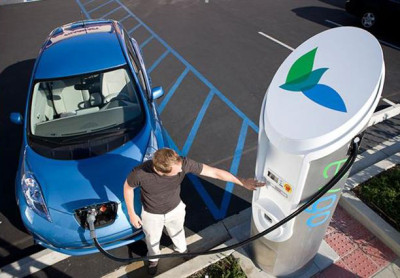 Few clean technologies are as central for meeting climate change goals as electric vehicles. Yet in places like California, which leads the U.S. with approximately 300,000 EVs on the road, the needed charging infrastructure is lagging.
Few clean technologies are as central for meeting climate change goals as electric vehicles. Yet in places like California, which leads the U.S. with approximately 300,000 EVs on the road, the needed charging infrastructure is lagging.
Analysts estimate that the state will need as many as 220,000 publicly accessible EV charging ports by 2020 to meet demand, well beyond the roughly 12,000 available in the state today. So how will California meet this challenge?
Join the UCLA and UC Berkeley Schools of Law for a free lunchtime forum on policy options to boost California’s EV charging infrastructure on Thursday, June 29th at UCLA Law. The two law schools will release a major joint report at the event as part of the Climate Change and Business Research Initiative, entitled “Plugging Away: How To Boost Electric Vehicle Charging Infrastructure.”
WHEN: Thursday, June 29th, 12 noon to 1:30 p.m. (registration and lunch begin promptly at 11:30am).
WHERE: Room 1447, UCLA School of Law, 385 Charles E Young Drive, Los Angeles, CA 90095
Keynote Address:
The Honorable Janea Scott, Commissioner, California Energy Commission
Panel presentations:
- Tyson Eckerle, Office of Governor Jerry Brown, Business and Economic Development (GO-Biz)
- Terry O’Day, EVgo
- Dean Taylor, Southern California Edison
RSVP by Friday, June 23rd. Space is limited, and MCLE credit is available.
Funding for the Climate Change and Business Research Initiative is generously provided by Bank of America.
It’s one of the best uses I’ve seen for used EV batteries — putting them to use as mobile charging devices for EVs. That’s what Freewire is doing, and their product is a top four finalist for the SAFE energy security prize, to be announced at the end of July. Here’s the promo video:
You can read more about what it will take to boost a market for used EV batteries in Berkeley / UCLA Law’s Reuse and Repower report.
Well, it was bound to happen. After hearing other EV drivers tell me their horror stories, I finally (sort of) got one of my own.
On Wednesday last week, I parked my Nissan LEAF at an off-site airport parking lot for a four-day trip, returning Sunday evening. I was the sole adult with three children in tow and parked the car with about 70 percent of the battery remaining (more than enough to get back home). I loaded the luggage and kids onto the shuttle van, had a great trip, and returned to the car on Sunday evening. Everyone was ready to get home, have a quick, late dinner, and go to bed.
But lo and behold when I looked at the dashboard, the sign said “key not detected” and the battery was at only 20% capacity. The roughly 24 miles remaining was not enough for a 15-mile, mostly uphill trip home.
What happened? Evidently I had failed to turn the car off when I left it. And with no auto shut-off feature, the car battery slowly died over four days, presumably beeping for an undetected key that was in my pocket 400 miles away.
We weren’t going to make it home. Panic ensued. We had to find an available charger somewhere nearby as the battery quickly dwindled on the freeway. We finally located (via Plugshare.com) a ChargePoint Level 2 in a parking garage by an Amtrak station in Oakland’s Jack London Square. Thankfully one of the two parking spots/chargers was available when we pulled in.
Since I don’t have a ChargePoint membership, I had to call to activate the charger with my Visa. I was on hold for a few minutes, and after about 5 minutes I got it plugged in. Then I had to wait in an empty parking garage with three hungry and tired kids while the car slowly charged. I gave myself about 30 minutes, which I figured would be about an additional 10 miles or so — just enough to get home.
I unplugged after about 35 minutes to be safe and had 28% of the battery now. But it was still a white knuckle drive home as the dashboard said we had about 9 miles remaining when we were about 5 miles from home. It was not a pleasant way to end the trip.
Lessons learned? Of course I need to double-check that the car is actually turned off. But why did Nissan not include an auto shut-off feature? After a day left on with no key, I think it’s safe for the car to turn off automatically rather than draining the battery. I really hope Nissan fixes that problem. The car motor is silent and so it’s not always obvious that it’s been left on. And I’ve noticed that sometimes it’s easy to accidentally double-click the off button, which actually turns the car back on.
Still, all in all we were pretty lucky. We found a charger and everything worked out. With more charging stations deployed, this kind of situation will be easier to handle in the future. But it was an inconvenience that could have been avoided by Nissan, and not just by my being more careful. I surely will be in the future though.
Necessity breeds invention, and in the case of electric vehicle charging, it’s come from an unlikely source. Tony Williams was a fairly typical EV driver and advocate. But in the last few years he has become a serial entrepreneur, developing homemade charging products that have become commercial successes. And they have all sprung from his own needs as a driver.
He’s got a number of nifty inventions, especially for Toyota Rav4 EV drivers. But my favorite might be his extension cord idea. From a profile on Williams in Charged Electric Vehicles Magazine:
When you come to a charging spot it’s often blocked, or the last guy left his EV there, or you just can’t reach because your charge port is in the rear – like with the RAV4, BMW i3, Mercedes B-Class, and Tesla Model S,” said Williams. “The number-one problem with charge ports in the rear is when you pull into angled parking spots with a charger on the curb. Often, the cord will barely reach, or it won’t at all, and turning the car around to back it in on a busy street is nearly impossible.”
In these cases, Williams realized that a J1772 extension cord would be invaluable. So he created one, called it JLONG, and started selling it. It’s one of those products, like jumper cables or a spare tire, that when you need it, you really really need it. The unfortunate truth is that when a driver needs to charge away from home, the competition is not only other EVs, but also gas cars that want to use the charging spots for parking. The JLONG helps to satisfy this really basic need. “I’ve seen some really nutty stuff out there with people stretching cords to the limit,” said Williams.
Like other states, California has a shortage of public EV charging stations and a problem ensuring that they are properly maintained and available for us when drivers need them. The extension cords could provide an easy way to increase their availability by allowing people to charge when another car is blocking the spot and either isn’t electric or is already charged.
As Williams relates, “It saved my bacon quite a few times, and I’ve heard a lot of similar stories from our customers. We sell quite a few of them.” The “JLONG” comes in customizable lengths but may soon be standardized to meet high-volume demand. For his part, Williams carries a 40 foot version.
It’s nice to see this kind of grassroots innovation take hold — signs that the electric vehicle market is here to stay and launching market-reinforcing products and services.

